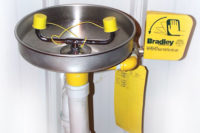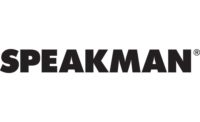When chemicals can contact the eye or body and cause injury, immediate action is necessary to rinse affected areas. Emergency showers and eyewashes are the primary equipment for such action.
A directive from Oregon OSHA provides guidance on emergency showers and eyewashes, stressing the need to understand the potential chemical hazards that would necessitate their use in a workplace.
The directive provides guidelines for determining when an eyewash and/or safety shower is required and for assessing the adequacy of such facilities. It also answers questions about compliance, the requirements for eyewash and/or deluge showers at nonfixed work sites and for specific agents such as chlorine, anhydrous ammonia and pesticides; and the type of eyewash and safety shower facilities acceptable for these circumstances.
“Since an eyewash and/or shower is first aid rather than a preventative measure, the approach used in this revised program directive is to consider the hazard(s) of the chemical and the immediate and appropriate first aid measures to be used in the event of an emergency,” according to the directive.
Included in the document:
- Which properties of the chemicals must be evaluated (its physical state, concentration, pH, temperature, and how the chemical may damage the eye and skin)
- How employees will work with chemicals during handling, transfer, use or disposal operations; Appropriate training based on hazard communication, material safety data sheets, and the measures employees can take to protect themselves;
- Personal protective equipment requirements
- Work-site conditions such as indoor or outdoor, protection from freezing conditions, fixed or nonfixed locations, and facility layout;
- Availability of eyewash and body flush equipment and water sources.
- Location
- Design specification (temperature, water pressure, water volume, testing)
- Employee training and identifying the units
- Violations






